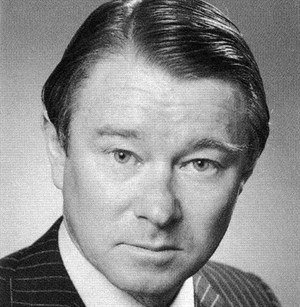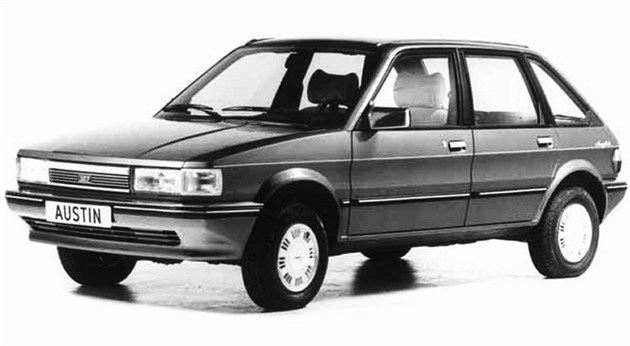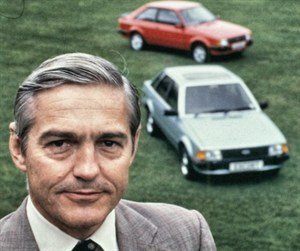Secret documents revealed: The future of BL, Part two

De-Classified government documents: The future of British Leyland
We've got our hands on recently de-classified government documents that shows what the newly-elected Conservative administration of 1979 thought of British Leyland and its future. We're serialising the documents in three parts. This is the second part, covers December 1979-March 1980 and runs to 164 pages.
As the 1980s dawned, BL's future may have been secured in the short term when the government backed BL boss Sir Michael Edwardes' corporate plan in December 1979, but continued success depended on future profitability. Would the upcoming Metro and Maestro secure enough sales to see BL through? The Conservatives weren't so sure.
Click to read part one - September-December 1979
The future of BL, part two
 When we left the story last time, the future of British Leyland was hanging in the balance. Sir Michael Edwardes' (right) 1980 Corporate Plan was a bold step in slimming down the company, and it rode on the work force voting for it - and then agreeing to the government funding it. Workers would be voting for for factory closures, job losses and changes in union practices - but more importantly, they were voting for the very survival of their jobs.
When we left the story last time, the future of British Leyland was hanging in the balance. Sir Michael Edwardes' (right) 1980 Corporate Plan was a bold step in slimming down the company, and it rode on the work force voting for it - and then agreeing to the government funding it. Workers would be voting for for factory closures, job losses and changes in union practices - but more importantly, they were voting for the very survival of their jobs.
On 1 November 1979, the workers voted overwhelmingly in favour of the Corporate Plan. However, the government financial support, promised by the previous administration in 1978 couldn't be taken for granted this time.
Margaret Thatcher's economic advisors were much less forthcoming with their support, and wanted to ensure that the money invested in BL would be worth a return. In a letter to Mrs Thatcher, Sir Kenneth Berrill, head of the Central Policy Review Staff, summed up the situation succinctly - and although he says that his department was more optimistic than Sir Keith Joseph's (see Part 1), it painted a grim picture of BL's future prospects.
He concluded that 'there was a slim chance of BL surviving as an independent company, even if the government gave all the support it was being asked for.' His preferred plan was to fund the 1980 Corporate Plan, but on the proviso that the government works with Edwardes to come up with a contingency plan naming potential buyers for all - or part - of BL. The list contained in the archive is interesting because although Berrill concluded that General Motors and Ford were the most suitable partners, neither were near the top of the list.
On 19 December 1979, BL presented its own case for funding. At the time, it still employed 150,000 workers in the UK in factories as diverse as Speke in Liverpool, Workington, Bathgate and Swindon in Wiltshire - as well as the central Birmingham/Coventry/Oxford axis. Its model line-up was in the throes of being overhauled, and future model plans included the LC8 (Metro), which was nearing completion and scheduled for launch in late 1980, the LC10 (Maestro, below), the Jaguar XJ40 in 1983, and Rover SD1 replacement (called SD3 in this document) in 1984 - it's worth noting how those dates would subsequently slip.

The company maintained that the 1980 Corporate plan was all about realism, and reducing factory and worker headcounts in the interests of speeding these model development programmes. It was about this time that Edwardes first used the term 'product-led recovery' in reference to how the success of desirable new cars would fund BL out of its dependence upon government funding. As for the amounts asked for: the existing £225m of £1bn allocated by the Ryder Report in 1974, but with a further £205m to be covered by the government between 1980-'84 for redundency and reconstruction costs.
 It also said that if the funding wasn't forthcoming, the board would resign, concluding this was the only option for BL other than closure of break-up; both of which would have disastrous consequences on the UK economy.
It also said that if the funding wasn't forthcoming, the board would resign, concluding this was the only option for BL other than closure of break-up; both of which would have disastrous consequences on the UK economy.
It was in January 1980 - and with the government still considering funding BL's corporate plan - that the story almost took an altogether tangential direction. Kenneth Berrill wrote to the Prime Minister's office to confirm that Bob Lutz (right), then in charge of Ford of Europe had expressed an interest in talking to the government about BL. This was clearly in response to Berrill's suggestion that a buyer should be sought out.
Interestingly, Lutz sought out an agreement for talks with the government before seeking a direction from his bosses in Detroit. If he could get a green light from Whitehall, then he'd seek permission to proceed from Detroit. Berrill's letter to the PM was interesting because it discussed Ford's motivation for a purchase of BL, and concluded that the prime reason was to get hold of Jaguar, as well as shoring up its share of the European car market. As for the UK, BL and Ford combined in 1980 terms would have accounted for 45 per cent of the market - broadly similar to BL's market share at its formation in 1968...
Certainly, Margaret Thatcher was excited by the prospect of a sell-off of BL to Ford, stating that the cost to the Exchequer could well be less than the outstanding funding demands that were looming over the British carmaker. Tentative talks began.
The background to these events weren't promising. BL's market share at te beginning of 1980 continued to fall alarmingly. In the first month, it was down to 15 per cent, on the back of an increasingly uncompeitive model range. Also the company's profile in the media wasn't good, as the continuing investigation into the dismissal of Union Convenor Derek Robinson rumbled on, with the threat of strike action continuing to hang over the company. The AUEW called for BL to reinstate Robinson, and threatened strike action if BL didn't accede to its wishes - and instead, knowing that its funding was still hanging in the balance, BL refused to cave in.
While Ford and the government was talking, with the Americans preparing to package a bid for BL, another interesting manufacturung development began to come to the fore. Christopher Brocklebank-Fowler MP came to Whitehall with an interesting potential tie-up. As consultant for Nissan and a spokesman for Datsun dealers in the UK, he returned from his February 1980 trip to Japan with the news that the Japanese company was looking to either form an association with BL, or to look into setting up a production site in the UK.
Interesting times.
Part Three will cover March-May 1980. A key feature of these papers is the government's funding of BL and the future model line-up, not least the launch of the Austin Metro.
Comments
Compare classic car insurance quotes and buy online. A friendly service offering access to a range of policies and benefits.








Add a comment